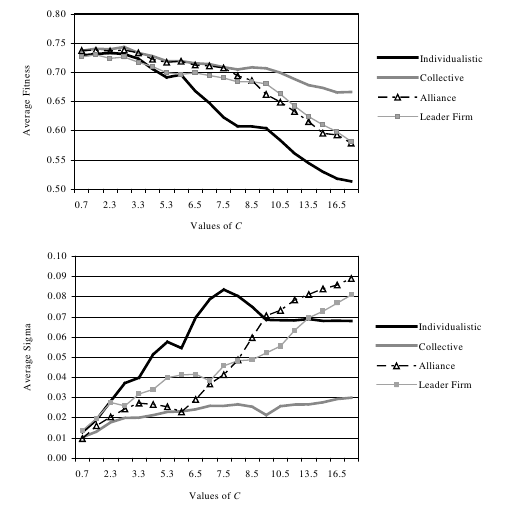Divide and conquer? The role of governance for the adaptability of industrial districts
Kerstin Press
ACS - Advances in Complex Systems (2007)
Abstract
This paper develops a simulation model of the behavior of industrial districts in the face of changes in their environment. By applying Kauffman's N/K-C model to the question of optimum governance in industrial districts facing an external shock, the paper sheds light on the optimum co-ordination mechanism among agents in interdependent industrial networks. Simulation results indicate that collective governance structures with agents adjusting for the sake of the district as a whole perform best in adaptation, whereas individualistic governance modes deliver the worst results. Alliance and leader firm governance forms position themselves in-between these two extremes. However, both modes of governance can be preferable to the collective one if the observation and punishment mechanisms in the district's local culture are not strong enough to impose solidarity among its agents. In this case, a prisoner's dilemma emerges and the collective governance form is replaced by the inferior individualistic one. Through these results, the model highlights the link between governance and district adaptability. It provides an explanation for the trend in Italian districts towards more hierarchical governance structures. Moreover, the identification of the role played by governance structure for district adaptability in changing environments could serve as guidance for future research.

